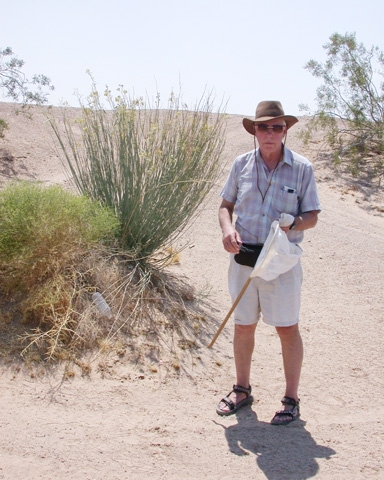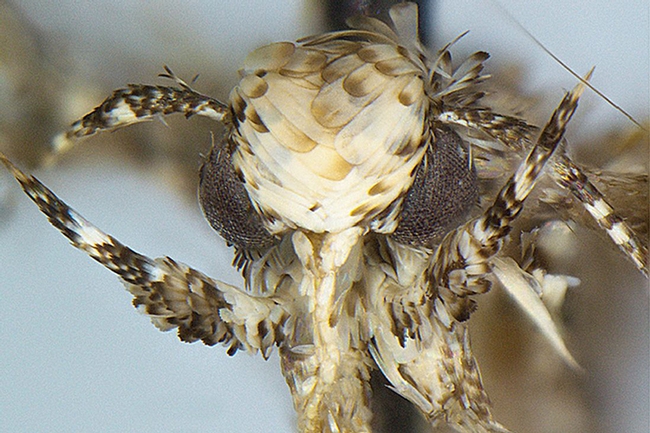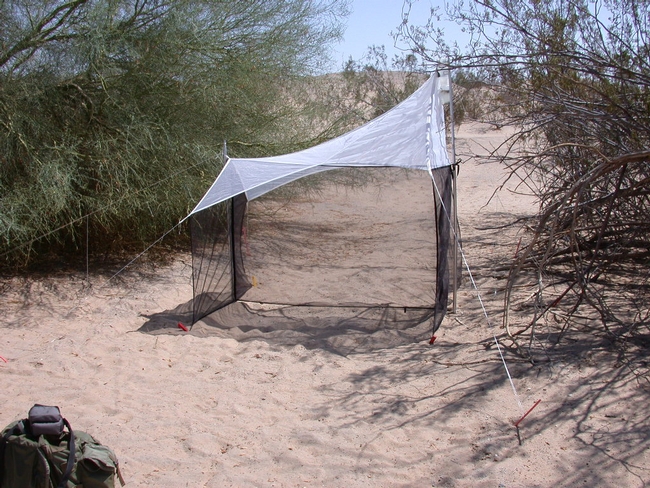
Did you read the abstract published Jan. 17 in the journal ZooKeys about the newly discovered and named moth, Neopalpa donaldtrumpi?
No? Well, you probably read the news story. It went viral.
Somewhat overlooked was the role that scientists at the Bohart Museum of Entomology, University of California, Davis, played. The tiny moth was part of a desert insect collection that the UC Davis researchers loaned to evolutionary biologist and systematist Vazrick Nazari of Canada.
In sifting and sorting through the Bohart specimens, the brightly colored miniscule moth drew Nazari's attention. A new species! The yellow scales on the tiny moth's head reminded him of President-Elect Donald Trump's hairstyle.
Like a moth to a flame, Nazari decided on a name: Neopalpa donaldtrumpi.
Class: Insecta
Order: Lepidoptera
Family: Gelechiidae
Genus: Neopalpa
Species: N. donaldtrumpi
“The reason for this choice of name is to bring wider public attention to the need to continue protecting fragile habitats in the U.S. that still contain many undescribed species,” Nazari wrote in ZooKeys.

Bohart Museum associate/research entomologist Thomas "Tom" Zavortink and colleagues collected the tiny moth with the orange-yellow and brown wings in the Algodones Dunes, bordering Arizona and the Mexican state of Baja California. Tiny? It has a wingspan of less than one centimeter.
"We surveyed the insects of the Algodones Dunes for more than six years with a contract from the U.S. Bureau of Land Management," Kimsey said. "It was a really fun/interesting project. We collected nearly 2,000 species of insects from about 200 square mile of 'sand.' Six percent were new to science. The moth was collected in a Malaise trap in one of the washes on the east side of the dunes."
As for Zavortink, he's been a Bohart Museum associate since 2001. He's a former professor and chair of the University of Francisco Department of Biology. His career also includes research entomologist with the Walter Reed Army Institute of Research, Washington, D.C. He holds a doctorate in zoology from UCLA, where he also received his master's degree.
Zavortink is known for his mosquito identification for vector/mosquito control districts, California Department of Public Health, Latin American culicidologists and professional colleagues, and his bee identification for professional colleagues. He completed and published a survey of the bees of the Imperial Sand Dunes Recreation Area, Imperial County, for the Bureau of Land Management.
One of the bees he's researched is the European wool carder bee (Anthidium manicatum), discovered in New York in 1963 and in California in 2007. (See Bug Squad.)
Naming critters for people--from citizens to celebrities to presidents to other public figures--isn't new. President Barack Obama has nine species named for him (more than any other president). His namesakes include a long-legged, resourceful Northern California spider, Aptostichus barackobamai, and a colorful spangled darner, a perchlike fish, Etheostoma obama.
Having your name associated with a new species is considered an honor, scientists say. It's a permanent legacy, unlike the names of many streets, schools, other buildings, and parks, which can be subject to removal.
But here's a good thing: if you're interested in naming an insect for you or a loved one, the Bohart Museum offers a biolegacy program. For a sponsorship of $2000 (which helps fund the museum's research program), you can select a species for naming, and receive a framed photo and documentation (publication).
The Bohart Museum scientists describe as many as 15 new species annually, and their associates, "many more," Kimsey says. "We could use your help with the selection of new species names in the course of our research."
Some of the insects ready for adoption are pictured here. For more information, email bmuseum@ucdavis.edu or call (530) 752-0493.
Attached Images:

Photo of the head of a male moth, Neopalpa donaldtrumpi, courtesy of Vazrick Nazari, ZooKeys journal.

Bohart Museum researcher Danielle Wishon, graduate of UC Davis, in the clay pan of Algodones Dunes. (Photo by Lynn Kimsey)

Site of where the Neopalpa donaldtrumpi was discovered by Bohart Museum of Entomology researchers. (Photo by Lynn Kimsey)